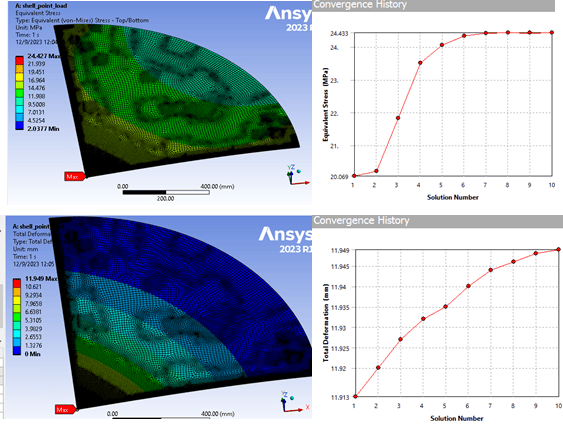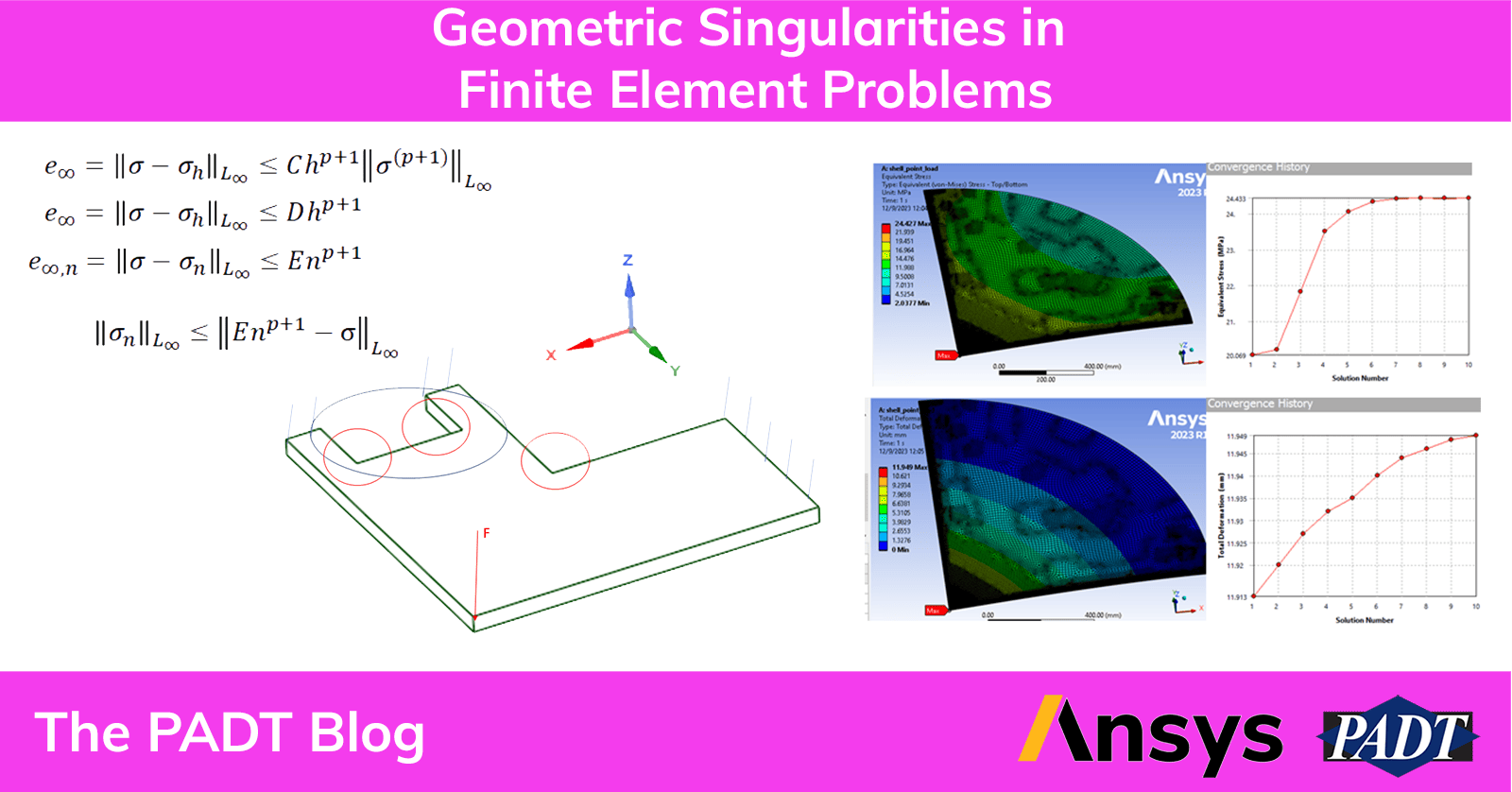
A singularity in math is not a good thing. It is something that some mathematicians spend their careers dealing with, especially for differential equations. Since Finite Element Analysis (FEA) is all about solving differential equations, numerical singularities can show up in models due to the geometry that the underlying differential equations are asked to describe. These singularities, the occurrence of singular points – locations at which some solution quantity (usually stress or strain) fails to converge to a finite value upon mesh refinement, can not just lead to the wrong results, they can keep models from solving.
However, most users of FEA tools are not familiar with singularities and the fact that certain locations in a model may produce results that are unreliable, even when the model is perfect in every other way.

PADT’s Alex Grishin has studied the problem of geometric singularities in Finite Element Problems from a mathematical and practical standpoint and has been kind enough to sum it all up for us in the PowerPoint below. As Alex points out in his background slide, there are lots of resources on what to do with singularities in your model when your model fails to converge, but few help users understand where and why geometric singularities occur.
A Detailed Look at Singularities
Inside the deck you will find:
- Background on Singularities in FEA
- A Definition of Mesh Convergence
- A Definition of Geometric Singularities
- A Deep Dive Into the First Type of Geometric Singularities, Divergence of Primary Solution Variables in Reduced-Order Elements
- A Deep Dive Into the First Type of Geometric Singularities, Divergence of Primary Solution Variable Derivatives in Reduced-Order Elements
- A Look at Geometric Singularities in Ful-Order Elements
- Suggested Remedies
- A Summary and Some Closing Thoughts
This presentation is an example of the technical expertise that PADT’s engineers bring to the table when customers partner with us for support and training for their Ansys software or for simulation consulting services. We are not just pushing buttons and looking at the results. Our team brings a fundamental understanding of engineering principles, mathematics, and physics to help meet your company’s simulation needs.




















